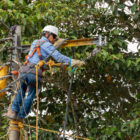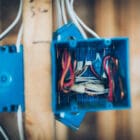Our ability to access the internet, connect with peers and transfer data without interruption is made possible by data cables. They act as the lifelines of our digital infrastructure.
Data cables come in various forms, each suited to particular applications and needs. As a result, understanding the different types of data cables is crucial for developing effective and dependable communication networks.
Twisted Pair Cables
In networking and telecommunications, twisted pair cables are a standard communication connection. They’re made up of two insulated copper wire pairs twisted together. The twisting helps to prevent electromagnetic interference and crosstalk between nearby lines, which helps provide dependable data transmission. Unshielded twisted pair (UTP) and shielded twisted pair (STP) are the two main categories for twisted pair cables.
The most popular and economical solution, UTP cables, are appropriate for most residential and small-scale business applications. STP cables, on the other hand, include an extra shielding layer that offers further defence against outside electromagnetic interference. Different communication technologies are supported by both UTP and STP connections. Twisted pair cables remain an essential part of contemporary communication systems because of their adaptability, low cost, and wide range of compatibility.
Coaxial Cables
Coaxial cables are frequently used to send high-frequency signals over great distances. They comprise a metal shield, an exterior insulating layer and an insulating layer with an inner conductor in the centre. The metal shield serves as a barrier, shielding the signal from outside interference and reducing signal loss, while the centre conductor transports the signal.
Additionally, this shielding keeps the signal from interfering with neighbouring lines. Additional defence and insulation are provided by the outer insulating layer. Because of its large capacity and low signal loss, coaxial cables are popular in systems like cable television, internet connections and video surveillance.
Fibre Optic Cables
Fibre optic connections are revolutionising the way data is transported over long distances. These thin, flexible cables, composed of optically pure glass or plastic strands, serve as routes for sending data as light pulses. Fibre optic lines, as opposed to conventional copper cables, offer remarkable speed and capacity, allowing for the quick transport of massive volumes of data. They are incredibly effective and can send data over great distances with minimal signal degradation.
Fibre optic cables are frequently employed in telecommunications, internet connectivity and high-speed data transmission applications. They are an excellent option for transferring data over long distances with outstanding reliability because of their immunity to electromagnetic interference and capacity to convey signals with little interference.
You can count on AJ Services Group for reliable and effective networking solutions. With our knowledge, dependability and high-quality services, our team will surpass your expectations by delivering projects on schedule and within budget. Contact us today to get fitted with the best of the best.







